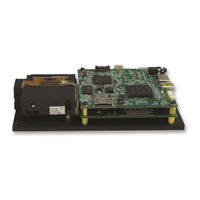Texas Instruments DM365 Manuals
Manuals and User Guides for Texas Instruments DM365. We have 2 Texas Instruments DM365 manuals available for free PDF download: User Manual, Getting Started Manual
Texas Instruments DM365 Getting Started Manual (86 pages)
IPNetCam Reference Design
Brand: Texas Instruments
|
Category: Camera Accessories
|
Size: 4 MB
Table of Contents
Advertisement
Texas Instruments DM365 User Manual (131 pages)
H.264 Base/Main/High Profile
Encoder
Brand: Texas Instruments
|
Category: Media Converter
|
Size: 1 MB

